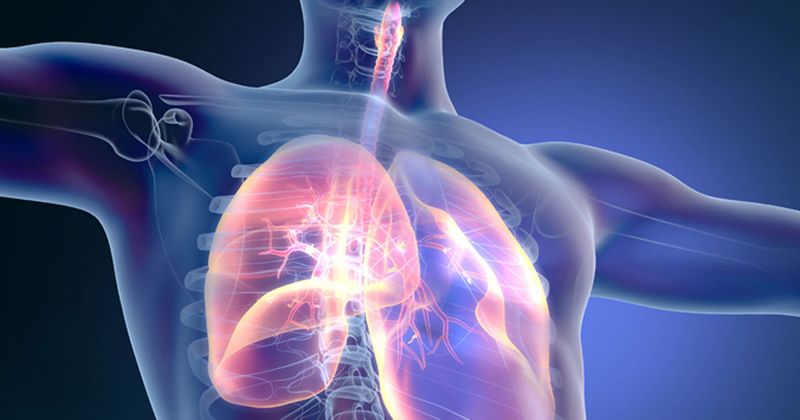Lung ultrasonography ‘rapid, sensitive and safe’ in detecting acute chest syndrome
Key takeaways:
- Lung ultrasonography had 92% sensitivity and 89% specificity for acute chest syndrome.
- Diagnostic accuracy was “very good” at 96%.
Using lung ultrasonography to identify acute chest syndrome in patients with sickle cell disease resulted in favorable diagnostic accuracy, sensitivity and specificity, according to results published in CHEST.

“Acute chest syndrome (ACS) in sickle cell disease remains a significant diagnostic challenge, and lung ultrasound may offer a more rapid, sensitive and safe (ie, no ionizing radiation) diagnostic approach that can be employed at the bedside to aid clinicians’ decision-making,” Julia Z. Xu, MD, MScGH, assistant professor of medicine at University of Pittsburgh School of Medicine, told Healio.

After searching through four different databases, Xu and colleagues analyzed six prospective observational studies (n = 625; 97% aged 21 years or younger) that compared lung ultrasonography with chest radiography (reference standard) when diagnosing ACS in patients with sickle cell disease to determine the diagnostic accuracy of lung ultrasonography.
Notably, two out of six studies were conference abstracts, and all but one of the studies took place within a pediatric ED. The limited data for adults was surprising, Xu told Healio.
Another surprising finding, according to Xu, was the “highly variable” diagnostic criteria for a positive lung ultrasound for ACS used across the studies, which included a combination of new pulmonary consolidations, air bronchograms, B-lines or pleural effusions found on a lung ultrasound.
Of the total number of patients with possible ACS, researchers found a confirmed diagnosis in 95 patients.
Diagnostic accuracy — represented by the area under the curve (AUC) for the summary receiver operating characteristic curve — was “very good” for lung ultrasonography (0.96; 95% CI, 0.94-0.97), a result that persisted after excluding abstract-only studies.
In addition to a high AUC, researchers also observed “excellent sensitivity” at 0.92 (95% CI, 0.68-0.98) and “very good specificity” at 0.89 (95% CI, 0.69-0.97) when lung ultrasonography was used for diagnosing ACS, according to researchers.
Use of lung ultrasonography also resulted in an elevated positive predictive value (0.88; 95% CI, 0.81-0.95) and a negative predictive value (0.9; 95% CI, 0.83-0.98).
After excluding studies that only had abstracts, researchers continued to find high sensitivity (0.87; 95% CI, 0.58-0.97), specificity (0.92; 95% CI, 0.77-0.97), positive predictive value (0.9; 95% CI, 0.84-0.96) and negative predictive value (0.86; 95% CI, 0.81-0.92).
The overall cumulative diagnostic odds ratio was 89 (95% CI, 32-244); however, this dropped to 78 (95% CI, 30-206) following exclusion of abstract-only studies, according to researchers.
Using the QUADAS-2 tool to analyze risk for bias in the included studies, researchers observed a high risk for bias in patient selection in one study and a low risk for bias in the reference standard in all six studies. Unclear risk for bias was found in two studies with regard to the index test and in three studies with regard to flow and timing.
“Future studies should further evaluate the test characteristics of lung ultrasound in the adult population, as well as compare lung ultrasound and chest radiography head-to-head to CT scans to determine which imaging modality is the superior initial test for ACS,” Xu told Healio.
Although this study by Xu and colleagues is small and mostly made up of pediatric patients, their findings demonstrate the possibility of lung ultrasonography to help combat death due to ACS in patients with sickle cell disease and highlight benefits associated with ultrasonography, according to an accompanying editorial by Elna Saah, MD, and Burton L. Lesnick, MD, both of Children’s Healthcare of Atlanta.
“There are several challenges to the current diagnostic modalities for ACS,” Saah and Lesnick wrote. “Findings on [chest radiography] lag behind clinical signs, and serial images are performed frequently. The dose of ionizing radiation compounds over time. CT scan is a more sensitive diagnostic and monitoring tool. Unfortunately, it has higher ionizing radiation, is more expensive, and even less available in low-resource countries, which precludes its generalizability. The [lung ultrasound] is an alluring alternative, conferring no ionizing radiation.”
